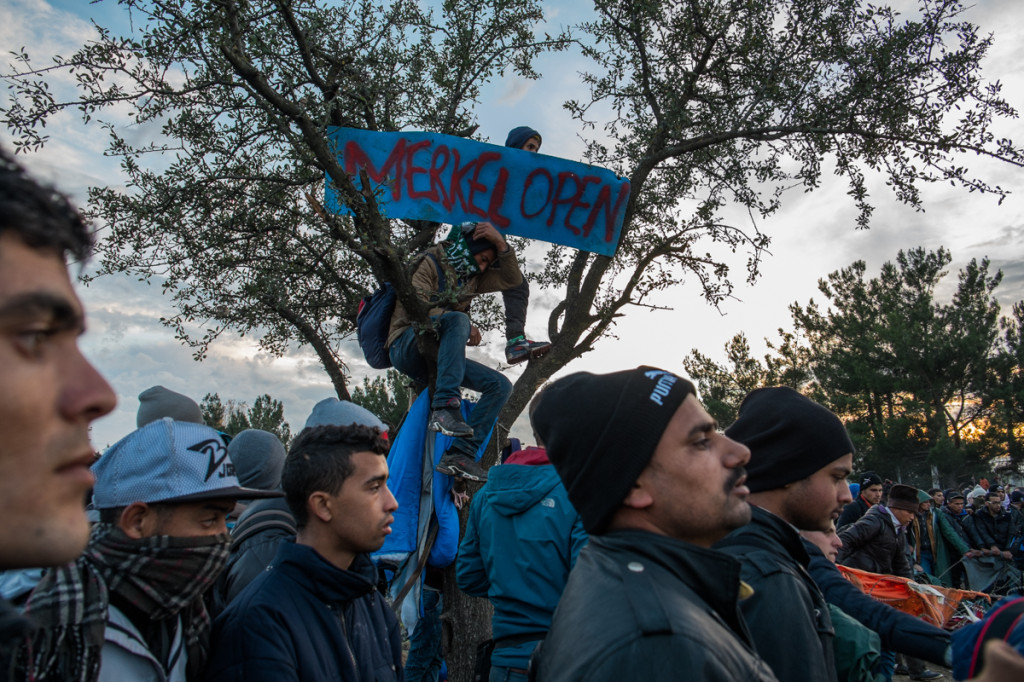“A new humanitarian situation is developing in Europe that needs urgent attention,” UNHCR spokesperson Adrian Edwards said of Idomeni on November 24th, 2015. All photos by Julia Druelle.
Last month, 60 people went on hunger strike in the village of Idomeni, on Greece’s border with Macedonia. 11 people stitched their mouths shut with a needle and thread.
A man from Morocco, also stranded in Idomeni, was electrocuted when he grabbed a stray electrical cable hanging from an abandoned train. He survived but sustained burn injuries. Another man in Idomeni hurled himself onto the railroad tracks. Volunteers in Idomeni say refugees and potential asylum seekers have to compete with each other for things like blankets and clothing, and that an aggressive, “survival of the fittest” attitude is pervasive.
Just a few days ago, the aggression and despair boiled over, and a large group of Idomeni’s stranded people charged the Macedonian police guarding the half-built, fortress-like border wall under construction by the Macedonian army. The police responded by firing off stun grenades and multiple canisters of tear gas.
Idomeni has gained a reputation as one of the most difficult places in Europe for the many refugees and potential asylum seekers who’ve made their way here since late summer. Between October 1st and November 29th, the UNCHR estimates that more than 300,000 people arrived in Greece and traveled along the Western Balkan route towards destinations in northern Europe.
The despair in Idomeni is a response to new restrictions on freedom of movement applied to people solely on the basis of their nationality. Four Balkan states, including Macedonia, recently adopted a rigid new border policy: Unless a refugee is from Syria, Iraq or Afghanistan, they will be stopped and turned away at the border.
The Macedonian army began building their massive wall. As Heaven Crawley wrote earlier this year, “Migrants are presented as victims, “illegals” and objects of control. The ‘solution’ is technical, bureaucratic and framed as an issue of migration management. Little attempt is made to explain why thousands of men, women and children would risk their lives to get on an overcrowded boat to cross a dangerous sea or what their hopes and aspirations might be.”
All photos by Julia Druelle in Idomeni for Balkanist. Visit her website to see more of her work.







